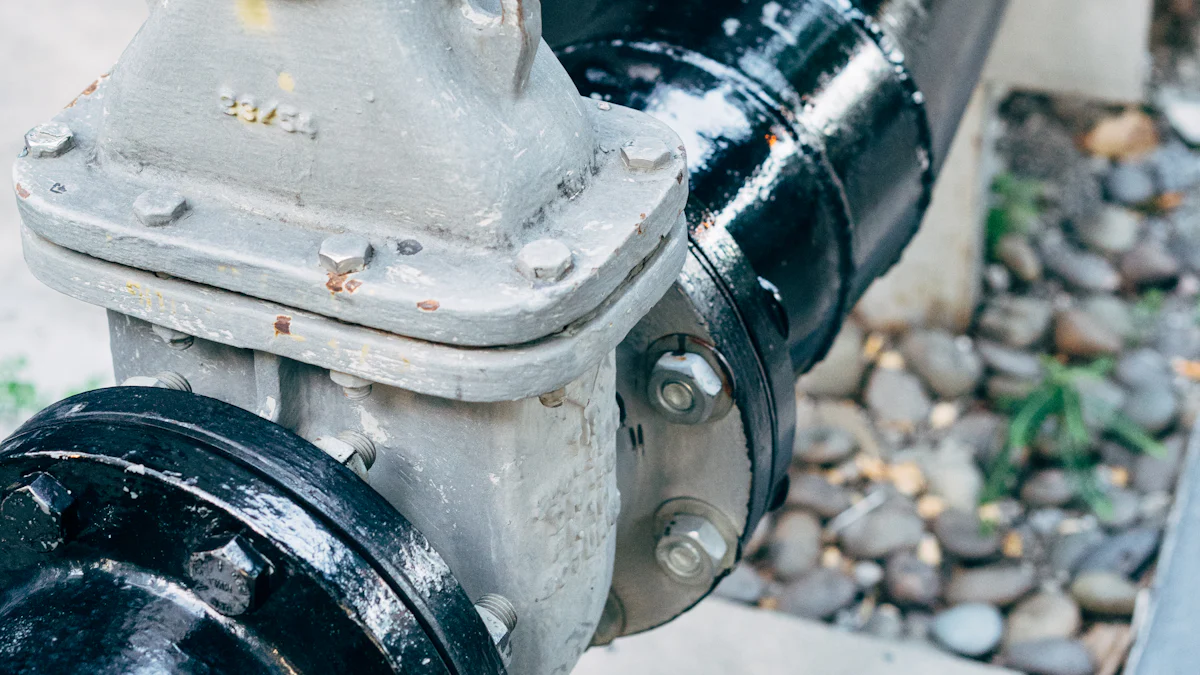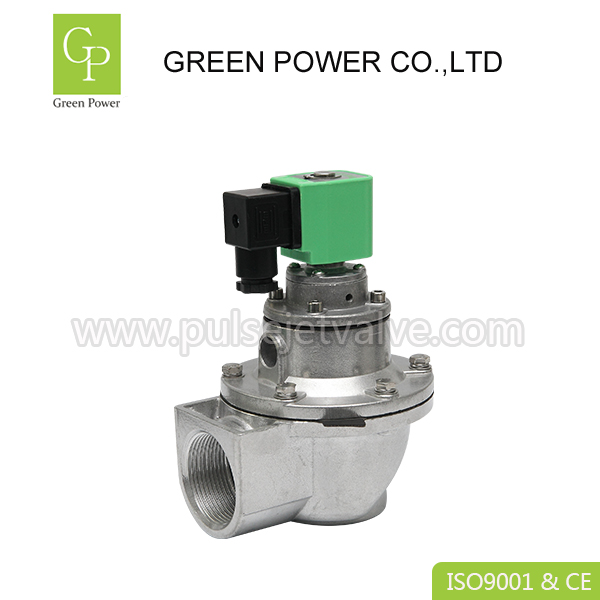
A pulse jet valve delivers precise bursts of compressed air to maintain the cleanliness of filters in industrial systems. This mechanism plays a vital role in ensuring optimal performance in air filtration processes. The Pulse valve DMF, known for its reliability, supports industries by enhancing dust collection efficiency and maintaining system functionality.
Key Takeaways
- Pulse jet valves send strong blasts of air to clean filters. This helps air filtration systems work better in factories.
- The solenoid and diaphragm team up to manage the valve. They make sure cleaning cycles are accurate and effective.
- Pulse jet valves save money by lowering maintenance and making filters last longer in many industries.
How does a pulse jet valve work?
Step-by-step working principle
A pulse jet valve operates through a precise sequence of actions. Initially, the solenoid receives an electrical signal, which triggers the valve to open. This action allows compressed air to flow into the valve chamber. The diaphragm, a critical component, reacts to the pressure difference and releases a sharp burst of air through the outlet port. This burst effectively dislodges dust or debris from filters in industrial systems. Once the signal stops, the solenoid closes, and the diaphragm resets to its original position, ready for the next cycle.
Role of compressed air in the operation
Compressed air serves as the driving force behind the pulse jet valve's functionality. It provides the energy required to generate the high-pressure bursts necessary for cleaning filters. The efficiency of the system depends on maintaining a consistent supply of compressed air. In applications like dust collection, the Pulse valve DMF ensures that the air bursts are powerful enough to remove accumulated particles, enhancing the overall performance of the filtration system.
Interaction between solenoid and diaphragm
The solenoid and diaphragm work in tandem to control the valve's operation. When the solenoid activates, it creates a pressure imbalance within the valve chamber. This imbalance forces the diaphragm to move, allowing compressed air to escape through the outlet. The diaphragm's design ensures a rapid response to the solenoid's signals, enabling precise and efficient operation. The Pulse valve DMF exemplifies this interaction, delivering reliable performance in demanding industrial environments.
Key components of a pulse jet valve

Understanding the key components of a pulse jet valve is essential to grasp its functionality. Each part plays a specific role in ensuring the valve operates efficiently and reliably.
Solenoid valve
The solenoid valve acts as the control center of the pulse jet valve. It receives electrical signals from the system's controller and converts them into mechanical actions. When activated, the solenoid opens a small pilot port, allowing compressed air to flow into the valve chamber. This action triggers the diaphragm to release a burst of air. The solenoid's quick response time ensures precise operation, making it a vital component in systems like the Pulse valve DMF. Its robust design allows it to withstand demanding industrial environments.
Diaphragm and its function
The diaphragm is a flexible membrane that separates the valve chamber into two sections. It responds to pressure changes created by the solenoid valve. When the solenoid opens, the diaphragm moves to release compressed air through the outlet port. Once the solenoid closes, the diaphragm returns to its original position, sealing the chamber. This repetitive motion ensures consistent bursts of air for cleaning filters or other industrial tasks. The diaphragm's durability directly impacts the valve's performance and longevity.
Compressed air supply and outlet ports
Compressed air supply and outlet ports form the pathways for air movement within the valve. The supply port connects to the compressed air source, ensuring a steady flow into the valve chamber. The outlet port directs the high-pressure air bursts to the target area, such as filter bags in dust collection systems. Proper alignment and maintenance of these ports are crucial for optimal performance. In applications involving the Pulse valve DMF, these ports ensure efficient air delivery and system reliability.
Applications of pulse jet valves
Dust collection systems
Pulse jet valves play a pivotal role in dust collection systems. These systems rely on the rapid bursts of compressed air generated by the valves to clean filter bags or cartridges. The high-pressure air dislodges accumulated dust particles, ensuring the filters remain unclogged and functional. Industries such as cement production, woodworking, and mining benefit significantly from this application. By maintaining clean filters, pulse jet valves enhance the efficiency of dust collection systems and reduce downtime caused by maintenance.
Industrial air filtration
In industrial air filtration, pulse jet valves ensure the removal of airborne contaminants. These valves deliver precise air bursts to clean filters used in HVAC systems, power plants, and chemical processing facilities. The consistent operation of the valves ensures that air filtration systems maintain optimal performance. This application is critical for industries that prioritize air quality and worker safety. The Pulse valve DMF, known for its reliability, supports these systems by providing consistent and efficient cleaning cycles.
Pulse valve DMF in manufacturing processes
The Pulse valve DMF finds extensive use in manufacturing processes. Its robust design and efficient operation make it ideal for applications requiring frequent filter cleaning. Industries such as pharmaceuticals, food processing, and textiles rely on this valve to maintain clean and efficient production environments. The valve's ability to deliver powerful air bursts ensures that filters remain free of debris, reducing the risk of contamination. Its durability and precision contribute to the smooth operation of manufacturing systems.
Advantages of using pulse jet valves
Efficiency in cleaning filters
Pulse jet valves excel in delivering efficient cleaning for industrial filters. Their ability to release powerful bursts of compressed air ensures that dust and debris are dislodged effectively. This mechanism prevents clogging and maintains the filters' optimal performance. Industries that rely on dust collection systems, such as cement production and woodworking, benefit significantly from this efficiency. The Pulse valve DMF, with its precise operation, enhances cleaning cycles, ensuring uninterrupted system functionality. By maintaining clean filters, these valves reduce the frequency of maintenance and extend the lifespan of filtration systems.
Durability and reliability
Pulse jet valves are designed to withstand demanding industrial environments. Their robust construction and high-quality materials ensure long-term durability. Components like the diaphragm and solenoid are engineered for consistent performance under high-pressure conditions. The Pulse valve DMF exemplifies reliability, offering consistent operation even in harsh conditions. This reliability minimizes downtime and ensures that industrial systems operate smoothly. The valves' ability to perform repetitive tasks without failure makes them a trusted choice for industries requiring dependable filtration solutions.
Cost-effectiveness in industrial operations
Pulse jet valves contribute to cost savings in industrial operations. Their efficient cleaning mechanism reduces energy consumption by maintaining optimal airflow in filtration systems. The extended lifespan of filters and reduced maintenance requirements lower operational costs. The Pulse valve DMF, known for its precision and durability, further enhances cost-effectiveness by minimizing system disruptions. Industries benefit from reduced downtime and improved productivity, making these valves a valuable investment for long-term operational efficiency.
Pulse jet valves, such as the Pulse valve DMF, play a crucial role in industrial systems. Their efficient design ensures reliable performance and cost savings while improving air filtration. These valves enhance productivity by maintaining clean filters and reducing downtime. > For expert guidance or product inquiries, consult trusted manufacturers or industry professionals.
FAQ
What industries benefit the most from pulse jet valves?
Industries like cement production, woodworking, pharmaceuticals, and textiles rely on pulse jet valves for efficient dust collection and air filtration, ensuring cleaner environments and improved productivity.
How often should pulse jet valves be maintained?
Regular maintenance depends on usage and operating conditions. Inspecting components like diaphragms and solenoids every 6-12 months ensures optimal performance and prevents unexpected downtime.
Can pulse jet valves handle high-pressure applications?
Yes, pulse jet valves are designed for high-pressure environments. Their robust construction and durable components ensure reliable performance in demanding industrial systems.
Post time: Jan-25-2025




